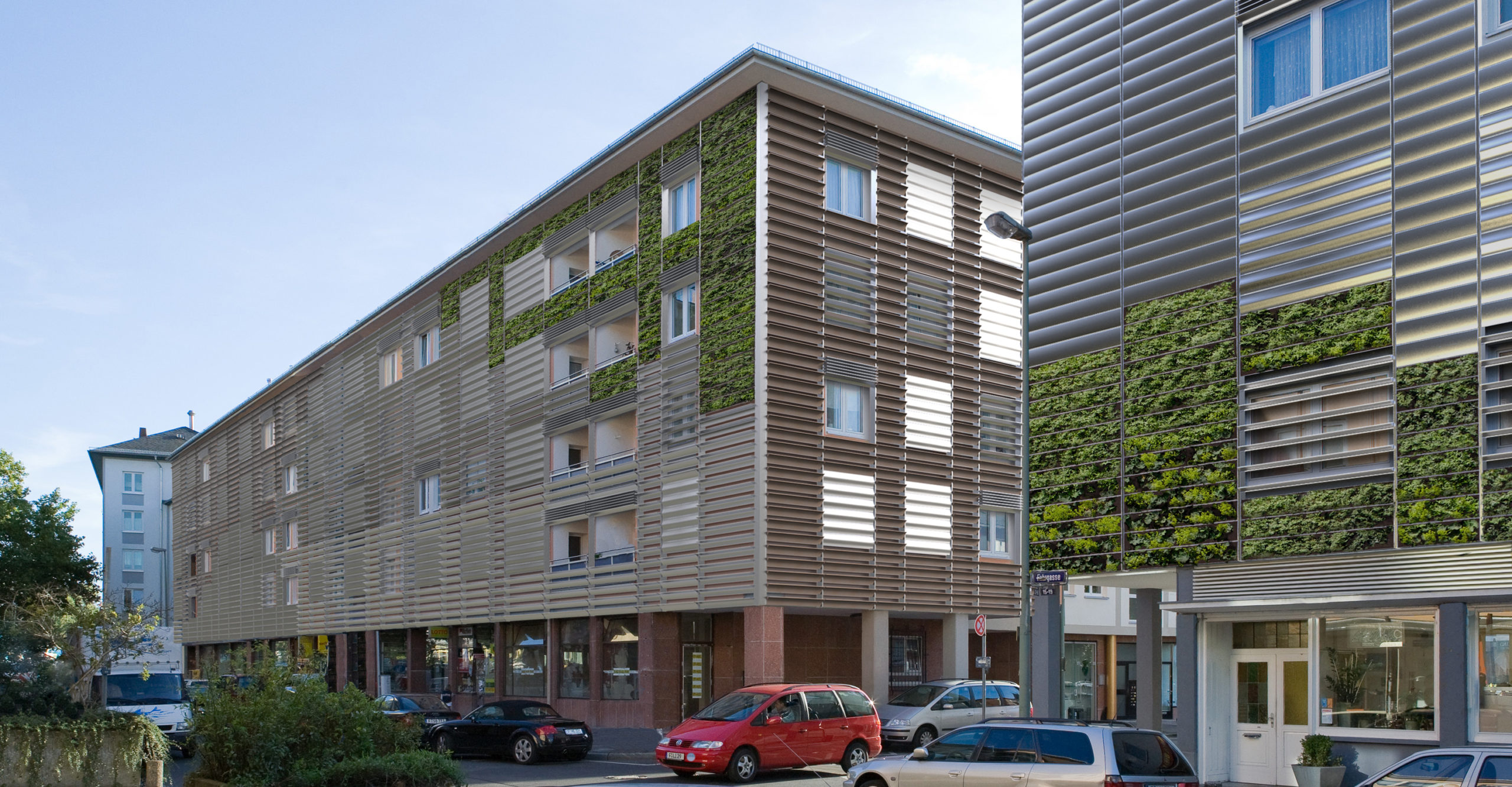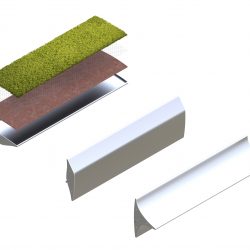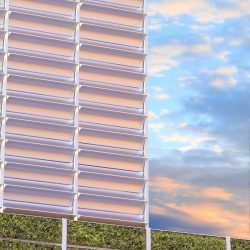TILT
Description
The overheating of our inner cities is a growing problem that will only worsen due to climate change. We will have to rethink the way we design our built environment. TILT is a modular façade system that is adapted to the climatic conditions in urban areas.What is the Topic?
At 12.9 °C, the average temperature in Frankfurt in 2018 was higher than anywhere else in Germany since records began. In fact, it is generally warmer in urban centres than in the surrounding area. This phenomenon is called urban heat island. On warm summer nights in particular, the temperature difference to the surrounding area can be as high as 10°C. Nightly cooling in the city is restricted by anthropogenic emissions such as waste heat, also heat-storing building materials, soil sealing and the lack of vegetation. TILT shall show a new approach to this problem and a possible countermeasure.
Why does it look like this?
Even complex facades can be subdivided by vertical rails into which slats are suspended. Due to different cross-sections, these react to climatic changes by rotation. T-shaped slats form a channel in front of the outer wall when exposed to heat, air rises. Turned 90°, they open, the masonry cools quickly. A further rotation forms chambers in which air is accumulated to slow down the walls’ cooling. Flat lamellas are mounted in front of windows, which vary between completely closed and open. Thirdly, planted lamellas can be mounted, which also rotate to form a closed layer or open.
What is special?
TILT should contribute to a return to a dynamic handling of temperature changes. Similar to natural organisms that adapt to changing environmental conditions such as temperature or solar radiation, the building envelope also offers great potential for regulation mechanisms between interior and exterior spaces. TILT uses this to make buildings more permeable or to seal them off. In urban areas in the temperate climate zone, there are also many existing buildings. The design should therefore be compatible with both new and existing buildings. In order to be applicable to as many different facades as possible, a modular system is the obvious choice. The aim of the design is to influence not only the indoor climate, but also the microclimate around the building. Greenery offers additional advantages: it can bind carbon dioxide and dust, evaporation through the leaves also increases air humidity and lowers the temperature in the immediate surroundings.
What is new?
Natural organisms can adapt to changing environmental conditions. The situation is quite different in modern buildings. Instead of forcing year-round thermal latency through ever thicker insulation layers, in temperate urban zones, it makes sense for the building to react directly to climatic changes at certain times. In order to deal optimally with different conditions, it is important that the system acts anticipatorily. Sensors measure various parameters such as temperature, wind speed, position of the sun or precipitation. Combined with external data, such as weather forecasts or the geometry of the surroundings, the modules can therefore be controlled with foresight.






